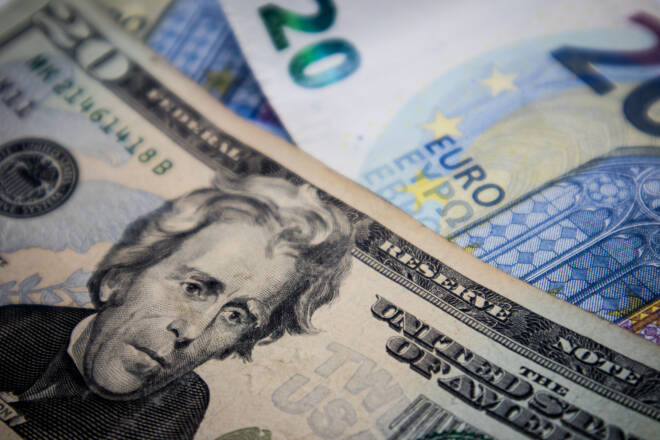Advertisement
Advertisement
EUR/USD Eyes Sub-$1.06 on Euro Area Stats and ECB President Lagarde
By:
It is a busy day for the EUR/USD. Inflation and trade data will draw interest, with ECB chatter also in focus as investors monitor banking sector news.
It is a relatively busy day ahead for the EUR/USD. German wholesale inflation figures for February will draw interest early in the European session. Further signs of easing inflationary pressures would weigh on the EUR/USD.
With the ECB shifting to a data-dependent policy approach, today’s numbers could give the ECB reason to take its foot off the gas. Economists forecast the German Producer Price Index to fall by 0.5% in February, following a 1.0% decline in January.
Later in the session, euro area trade data will provide further direction. Economists forecast the trade deficit to widen from €8.8 billion to €12.5 billion in January.
Investors should also monitor ECB member speeches. ECB President Lagarde will speak today, with comments on inflation, monetary policy, and the banking crisis likely to garner interest.
Away from the economic calendar, banking sector-related news will also influence following the UBS AG (UBS) deal to acquire Credit Suisse Group AG (CS).
EUR/USD Price Action
This morning, the EUR/USD was up 0.06% to $1.06706. A mixed start to the day saw the EUR/USD fall to an early low of $1.06646 before steadying.
Technical Indicators
The EUR/USD needs to avoid the $1.0651 pivot to target the First Major Resistance Level (R1) at $1.0698. A move through the Friday high of $1.06853 would signal a bullish session. However, the EUR/USD would need hawkish ECB chatter and hotter-than-expected German numbers to support a breakout session.
In the case of an extended rally, the bulls will likely test the Second Major Resistance Level (R2) at $1.0732 and resistance at $1.0750. The Third Major Resistance Level (R3) sits at $1.0768.
A fall through the pivot would bring the First Major Support Level (S1) at $1.0617 into play. However, barring a risk-off-fueled sell-off, the EUR/USD pair should avoid sub-$1.06 and the Second Major Support Level (S2) at $1.0571. The Third Major Support Level (S3) sits at $1.0490.
Looking at the EMAs and the 4-hourly chart, the EMAs send bullish signals. The EUR/USD sits above the 200-day EMA ($1.06611). The 50-day EMA closed in on the 100-day EMA, with the 100-day EMA narrowing to the 200-day EMA, delivering bullish signals.
A hold above the 200-day EMA ($1.06611) would support a breakout from R1 ($1.0698) to give the bulls a run at R2 ($1.0732) and $1.0750. However, a fall through the 200-day EMA ($1.06609) would bring the 100-day ($1.06445) and 50-day ($1.06420) EMAs into play. A fall through the 50-day EMA would send a bearish signal.
The US Session
Looking ahead to the US session, it is a quiet day on the US economic calendar. There are no US economic indicators for investors to consider. The lack of stats will leave bank-related news and sentiment toward the Fed to provide direction.
There are also no FOMC member speeches to consider. The Fed entered the blackout period on Saturday, leaving investors to consider how the Fed will respond to the banking sector crisis.
About the Author
Bob Masonauthor
With over 28 years of experience in the financial industry, Bob has worked with various global rating agencies and multinational banks. Currently he is covering currencies, commodities, alternative asset classes and global equities, focusing mostly on European and Asian markets.
Advertisement
